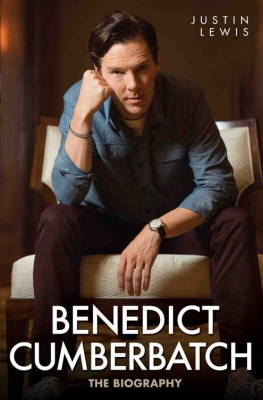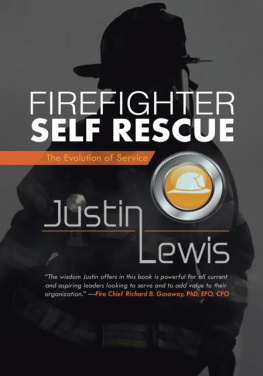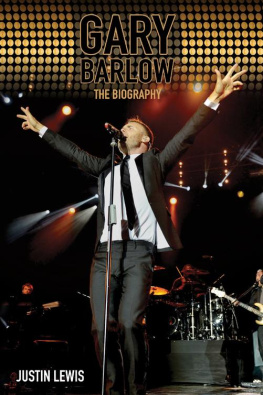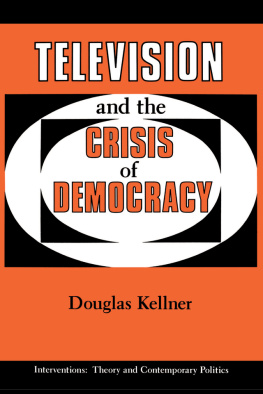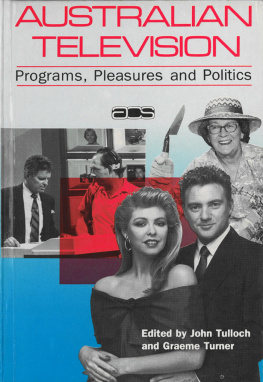ROUTLEDGE LIBRARY EDITIONS:
TELEVISION
Volume 9
THE IDEOLOGICAL OCTOPUS
THE IDEOLOGICAL OCTOPUS
An Exploration of Television and its Audience
JUSTIN LEWIS
First published 1991
This edition first published in 2013
by Routledge
2 Park Square, Milton Park, Abingdon, Oxon, OX14 4RN
Simultaneously published in the USA and Canada
by Routledge
711 Third Avenue, New York, NY 10017
Routledge is an imprint of the Taylor & Francis Group, an informa business
1991 Routledge, Chapman and Hall, Inc.
All rights reserved. No part of this book may be reprinted or reproduced or utilised in any form or by any electronic, mechanical, or other means, now known or hereafter invented, including photocopying and recording, or in any information storage or retrieval system, without permission in writing from the publishers.
Trademark notice: Product or corporate names may be trademarks or registered trademarks, and are used only for identification and explanation without intent to infringe.
British Library Cataloguing in Publication Data
A catalogue record for this book is available from the British Library
ISBN: 978-0-415-82199-5 (Set)
eISBN: 978-0-203-51517-4 (Set)
ISBN: 978-0-415-83736-1 (Volume 9)
eISBN: 978-0-203-37989-9 (Volume 9)
Publisher's Note
The publisher has gone to great lengths to ensure the quality of this reprint but points out that some imperfections in the original copies may be apparent.
Disclaimer
The publisher has made every effort to trace copyright holders and would welcome correspondence from those they have been unable to trace.
The Ideological Octopus
An Exploration of Television and Its Audience
Justin Lewis
Routledge
New York and London
Published in 1991 by
Routledge
An imprint of Routledge, Chapman and Hall, Inc.
29 West 35th Street
New York, NY 10001
Published in Great Britain by
Routledge
11 New Fetter Lane
London EC4P 4EE
Copyright 1991 by Routledge, Chapman and Hall, Inc.
Printed in the United States of America
All rights reserved. No part of this book may be reprinted or reproduced or utilised in any form or by any electronic, mechanical, or other means, now known or hereafter invented, including photocopying and recording, or in any information storage or retrieval system, without permission in writing from the publishers.
| ISBN | 0-415-90287-8 |
| 0-415-90288-6 (pbk.) |
Library of Congress
Cataloging-in-Publication Data available.
British Library of Congress Data also available.
Contents
My principal debt of thanks goes to Janice Gillian, who cast a critical eye over the first draft of this book, and who was an invaluable source of suggestions and advice. Thanks also to my general editor, John Fiske, and to those members of the Department of Communication at the University of Massachusetts with whom some of the ideas behind the book were discussed; in particular, Sut Jhally (my co-researcher on the Cosby project) Ian Angus, Elenora Patterson, and Harold Schlechtweg.
A number of people were involved in the research on The Cosby Show, most notably Betsey Chadwick, Glynda Christian, Leslye Col-vin and Ernest Green, who carried out the interviews and provided fascinating feedback during the first stage of the project. My thanks to them, to Bill Cosby, who funded the research (without the faintest hint of a string dangling from the check).
Last but not least, I am grateful to all those people who took part in the two audience studies, for giving me their time and their words.
This is a book about television audiences. While writing it, I was conscious of another audience, every bit as important to me as the one under discussion: the audience of which you, dear reader, are a member. I was keenly aware of how unfortunate it would be if a book that purports to know something about the television audience should be written in a way that ignores the needs and interests of its readers.
I have tried, as best I could, to keep two people in mind throughout. The first knows very little about TV audience research, or the theoretical work (such as semiology and cultural studies) behind the more recent developments thereof. The second knows a great deal about both. This book is an attempt to go as far as possible while assuming as little as possible.
The book is divided into two parts: Part 1 is a journey through developments in audience research, focusing on some of the more recent theoretical advances and the ideas that have informed them; is the presentation of two empirical qualitative audience studies, based upon television news and television fiction.
My main concern throughout is with one of the most mysterious and elusive aspects of watching television: how, in the most precise and intricate sense, does television actually influence us? What ideological role does it play in contemporary culture? I shall investigate what television means by examining how it means what it means, by exploring the complex relation between the message and the viewer.
introduces the reader to television audience research and takes a critical look at some of the research traditions that dominated the field from the 1940s to the 1970s. In so doing, the chapter confronts some of the basic questions to be resolved about the television audience.
provides the reader with a short interlude, placing the inquiry into the TV audience in its contemporary theoretical context. The study of the audience is briefly considered in relation to modern media studies, semiology and cultural studies.
left it, examining what I have called the new audience research, much of which has evolved from the theoretical traditions touched on in the previous chapter. It considers the relation between media criticism (or textual analysis) and audience research, and proceeds to a discussion of the most recent work in the field.
analyzes some of the practical and methodological questions that confront the audience researcher, concentrating on the qualitative approach to the subject.
; it introduces the reader to two empirical studies, one carried out in Britain, the other in the United States. The chapter uses the studies to tackle the methodological problems that surround the analysis of interview transcripts.
is an analysis of television news based upon the findings of an audience study. In the light of these findings, the ideological role of TV news is radically reconsidered.
, one the findings of an audience study. The findings are used to shed some light on recent debates about the show's meaning and significance.
The title of this book is, I admit, a little enigmatic. By the end of its meaning will, I hope, become clear. Happy reading.
INTRODUCING TELEVISION
Imagine, for a moment, that you have been magically transported back in time to the 1930s, anywhere in the industrialized world. Imagine also, if you will, that you have been transported for a particular reason: you are a journalist who has been asked to write a feature article on changes in everyday life between now and then. Your editor has wished you luck, leaving you by yourself to settle back into the comfortable padded seating of the time capsule.



